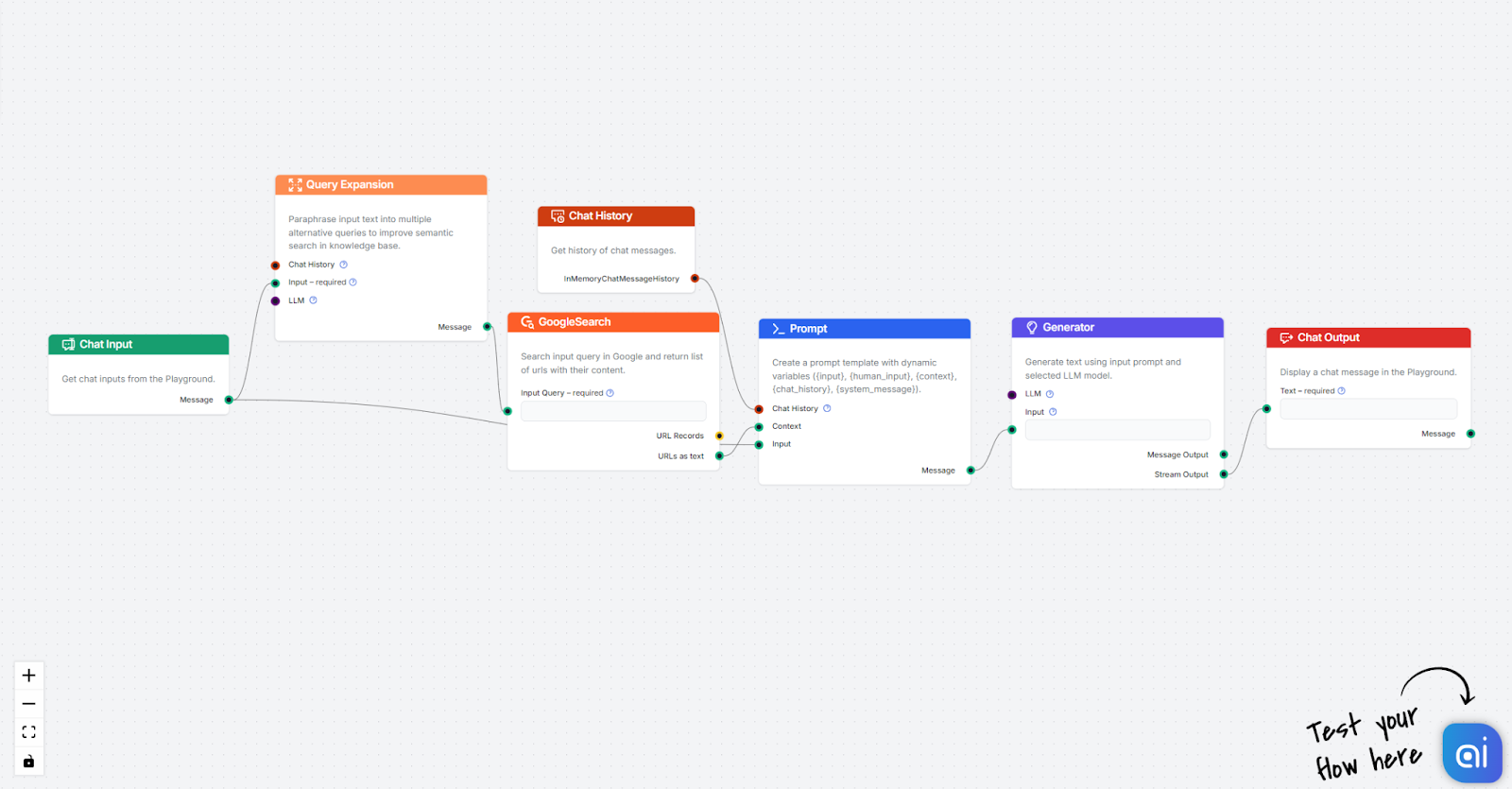
This flow deeply analyzes Google’s Search Engine Results Pages (SERPs) for a given keyword, giving you insight into the page ranking, competitors, and SEO strategies. It helps you understand how top-ranking pages are structured, what keywords they target, and the overall competitiveness of the keywords.
Input the keyword or phrase you want to analyze. The flow scans the Google SERP for the given keyword, analyzing top results for content structure, backlinks, and keyword usage. It then gives you a detailed report to help you optimize your content strategy.
Tip: Use this flow to monitor your keywords regularly to adapt your SEO strategy and maintain strong visibility for your target keywords.
Try the Flow
This Flow knows what to do thanks to its Prompt template:
“Your task is to generate latest news article about topic defined by human input. Enhance the human input query with words like ‘latest news’ or ‘last 24 hours’ or ‘today’ to make sure you find the latest news only.
You’re tasked with finding information people are trying to find from {input} and {context}.
Find out what the searcher’s personality is. Analyze what websites on top positions rank and what makes their content unique. Analyze the sentiment of SERP – negative, neutral, or positive.
Where is the main content about {input} located?
Is there any Experience in the SERP (Hint: reviews, first-hand experience)?
Is there any well-known website with considerable authority on the topic (Hint: Forbes for entrepreneurial content)?
Does Google prefer UGC (user-generated content)?
Is freshness needed (Hint: Most results are from 2024)?
Additionally, provide an overview of what content to write and assess whether there is a chance to rank for the keyword. Consider any previous discussion in {chat_history} and use {context} to enhance your analysis.
Answer in English and format the answer with markdown. Assist the user in answering related questions as requested.
*** CONTEXT START ***
{context}
*** CONTEXT END ***
*** CHAT HISTORY ***
{chat_history}
*** CHAT HISTORY END ***
*** INPUT ***
{input}
*** INPUT END ***
SEARCHER’S INTENT ANALYSIS:
Components breakdown
Chat Input: This is the message you send in the chat. It’s the starting point of any flow.
Query Expansion: Allows the Flow to paraphrase and use alternative questions, broadening the bot’s scope beyond the initial query.
GoogleSearch: Searches the web for results relevant to the user query.
Prompt: Passes detailed instructions, roles, and behaviors to the AI.
Generator: Connects AI for text output generation. It uses ChatGPT-4 as default.
Chat History: Ensures the bot remembers a set amount of previous messages.
Chat Output: Component representing the chatbot’s answer.




